It’s been a spring tradition for several years now for English National Opera to present small-scale productions in various venues around London. But this year the Royal Opera followed suit, heading across the Thames to the new Sam Wanamaker Playhouse at Shakespeare’s Globe. Ahead of the announcement of its solid but mainly safe 2014–15 season, we also learned that the ROH will present Monteverdi’s L’Orfeo in English at the Roundhouse in Camden next year — a rather more blatant incursion into ENO territory.
And if the company can take these small shows, which don’t even employ its orchestra, to NW1 and SE1, what’s to stop it taking them on tour beyond the M25? This would admittedly be trickier with this year’s offering, Francesco Cavalli’s 1644 L’Ormindo, a co-production with the Globe tailored to the authentic candles, trap doors and trapezes (and uncomfortable, cramped seating) of its new indoor theatre — a smaller, and distinctly less democratic space than the Globe itself: what few standing places there are are tucked away with restricted view, and had largely been abandoned by the end of the first-night performance.
One of the main things the show itself demonstrated was that the Royal Opera’s Kasper Holten is a far more effective director when denied the technical toys and pretentious tricks so indiscriminately applied to his recent Covent Garden Don Giovanni. Here was a stylishly realised production, with Anja Vang Kragh’s flamboyant baroque-with-a-twist costumes giving an extra mischievous, modern edge. There was imaginative use of the space, with cast members entering and exiting from all sides and, by and large, allowed to communicate Cavalli’s exquisite music (and the words of Christopher Cowell’s sensible translation) unhindered.
The poetry of Ormindo and Erisbe’s joint ‘death’ (the old poison switched with sleeping-draught trick), played out as the theatre’s candles were extinguished one by one, was properly touching; and the scene was beautifully sung by Samuel Boden and Susanna Hurrell. Throughout, Boden’s sweet tenor was well contrasted with the more robust singing of Ed Lyon’s preening Amidas. Joélle Harvey was delightful as the resourceful Sicle, and Harry Nicoll delivered a fine comic turn as her nurse Eryka. As Erisbe’s elderly husband King Ariadenus — frequent butt of the piece’s bawdier jokes — Graeme Broadbent hammed it up gamely. Christian Curnyn and the modest forces of his Early Opera Company, also signed up for next season’s L’Orfeo, played with impeccable style and taste.
If the whole thing felt a little short on imagination, magic and wonder, that might in part be down to the opera itself. L’Ormindo lacks the celestial and supernatural dimensions of some of the composer’s later works, and despite its moments of beauty, it is in essence a more earthbound comedy of errors — even if one optimistic Italian critic has called it ‘almost a Tristan und Isolde with a happy ending’. I’d love to see how Cavalli’s later La Calisto, with its divine interventions and celestial apotheosis, might be realised in this space.
ENO’s attempt to match opera with venue with its new production of Thomas Adès’s Powder Her Face was less successful. Ambika P3, a vast industrial box under an ugly University of Westminster building off Baker Street, ticks all sorts of trendy boxes — an imposingly big, blank canvas of a space, accessed by insalubrious narrow concrete stairs. But ENO unimaginatively (and expensively, one imagines) built steeply raked seating to hem in a small central performing area on three sides, with the orchestra on the fourth. Joe Hill-Gibbins, associate director of the Young Vic and directing his first opera, made some attempts to create a sense of the immersive, and the performers, sometimes positioned among the audience, were encouraged to eyeball us occasionally.
But wouldn’t all of this have been possible in an existing theatre? And while the flat, airless and loud acoustics helped to amplify the sassier side of Adès’s score, played with aplomb by members of the ENO orchestra under Timothy Redmond, it didn’t leave much room for subtlety. The voices (and Philip Hensher’s fast-paced libretto) weren’t done many favours either. It was a shame, because Clare Eggington was outstanding in the stratospheric lines of the multitasking maid. Alexander Sprague and Alan Ewing were also impeccable as Electrician and Hotel Manager in their many guises.
Amanda Roocroft might not be an obvious choice as the dirty Duchess (of Argyll) at the opera’s centre, but she managed to bring considerable nobility to the part, not least in the final scene, when the clutter of the production — mixing realistic, kitschy props wheeled in and out, and surreal masked extras and references to the Polaroid photography that was the Duchess’s undoing — was stripped away to powerful effect. This opera, nearly 20 years old now, gets far on its smart cynicism, but Roocroft helped show there’s more to it than that.
Got something to add? Join the discussion and comment below.
Get 10 issues for just $10
Subscribe to The Spectator Australia today for the next 10 magazine issues, plus full online access, for just $10.
You might disagree with half of it, but you’ll enjoy reading all of it. Try your first month for free, then just $2 a week for the remainder of your first year.

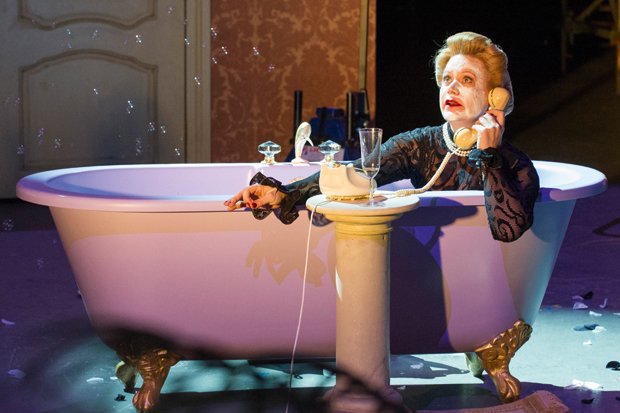
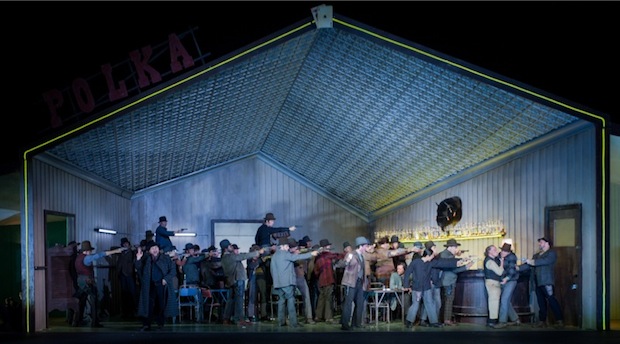
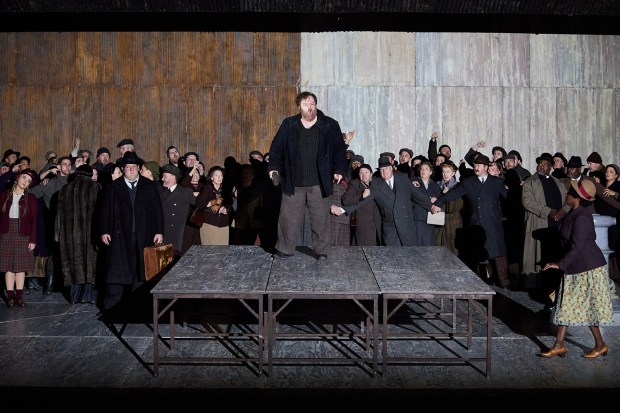
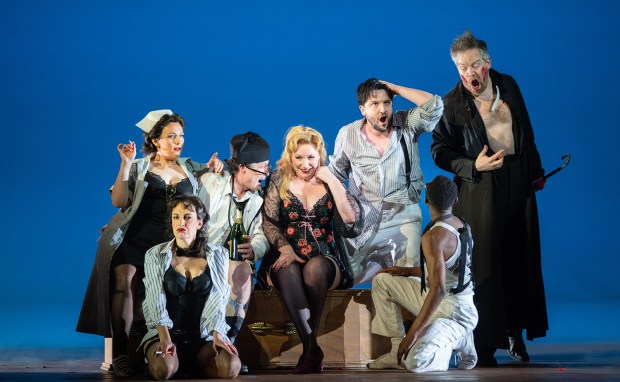
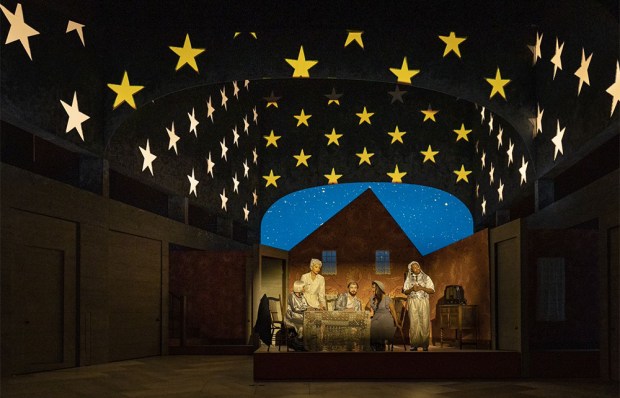
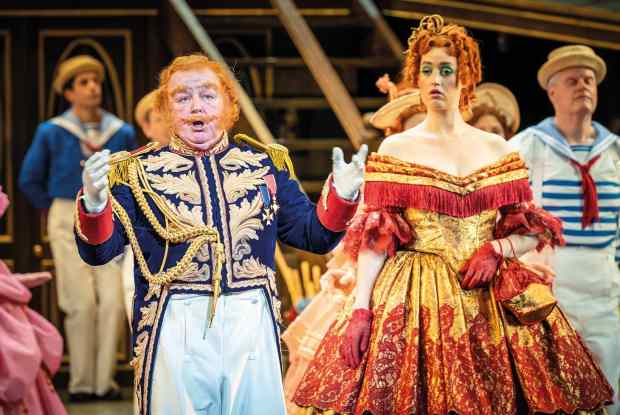
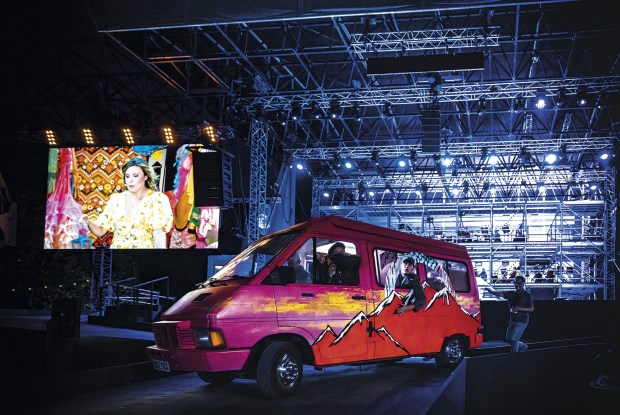






Comments
Don't miss out
Join the conversation with other Spectator Australia readers. Subscribe to leave a comment.
SUBSCRIBEAlready a subscriber? Log in